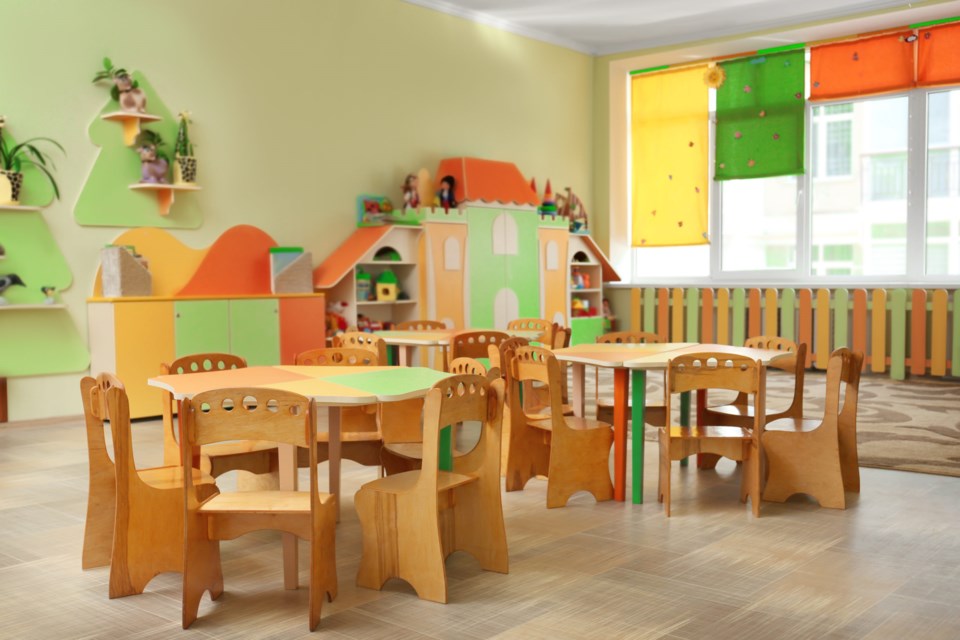Premier John Horgan has scored major points with voters by promising more affordable child care in two consecutive provincial elections. But trying to analyze the progress his government has made is no easy task.
Witness the debate in the legislature Tuesday, in which MLAs became stuck in an arduous and confusing back-and-forth over the number of “spaces” his government has created.
“Can the Premier confirm that only 6,000 child care spaces have been opened to date by this second-term government?” asked BC Liberal MLA Karin Kirkpatrick.
“We have created and supported the creation of spaces twice more than the former BC Liberal government has created in 16 long years,” replied Minister of State for Child Care Katrina Chen.
“Well, interestingly enough, between 2005 and 2017, the BC Liberals created 39,959 spaces, which is, on average, 3,030 spaces per year,” replied Kirkpatrick.
“The member opposite can throw out any information they want, but that's incorrect,” said Chen, who has insisted 26,000 spaces are being created with more than 70 per cent coming online in the next year. “We have been accelerating the creation of spaces and created twice more of the spaces in three years than the former BC Liberal government has created in 16 years.”
And on it went.
If none of that makes any sense to you, you aren’t alone.
There are few files in government that are more complex and politically charged these days than child care.
The current system is a complex mess of fee reductions, benefits, applications, special exemptions, income-based subsidies, pilot programs, federal funding, licensed versus unlicensed spaces, funded versus open spaces, and other measures that make it almost impossible to gauge the system’s progress in any clear overarching way.
It’s debatable whether this is by design, to help the current administration avoid accountability on a hot-topic file, or just the byproduct of the evolution of child care, in which the province has been struggling to find the right aid packages and financial levers it could afford the past six years.
Take the issue of cost.
The province tabled legislation Tuesday that would allow cabinet to expand fee caps on child care spaces, which can reach almost $2,000 a month in parts of Metro Vancouver for an infant.
Its current fee caps require child care operators to keep rates at the 70th percentile of what other daycares charge in a geographic region ($1,800 a month for infants and $1,526 for toddlers in Vancouver-Richmond for example), if they want to be eligible for provincial fee reductions of up to $350 a month for toddlers.
Sounds good in theory - it saves parents money and subsidizes operators. But child care providers have publicly complained across the province that the caps are too strict and make it unaffordable for them to expand their centres and create more spaces.
So, fee caps improve affordability – but exacerbate the shortage of spaces, which in turn put pressure back on fees.
Those kinds of contradictory complexities pervade the child care file.
For example, the province wants to rightly ensure qualified Early Childhood Educators take care of kids, but in doing so simultaneously worsens a pre-existing shortage of ECE workers and has to explore wage top-ups to incentivize them to stay in the system.
The game over numbers is not new.
The previous BC Liberal government also hid behind repeat announcements about thousands of “funded” spaces, which seemed to do nothing for skyrocketing rates and wait times that stretched to years.
Voters, overwhelmed at all the complexities, found Horgan’s 2017 promise of universal $10-a-day child care simple and appealing.
But that too has turned out to be a nightmare mess of complexities.
To date, the only true $10-a-day child care spaces created have been funded by the federal government through $60 million in pilot projects at 53 child care centres that give around 2,500 lucky parents access to $10 rates.
The B.C. government promised in its April budget to actually kick in some of its own money to expand that to 75 additional centres and 3,750 children. But it fell well short of keeping up with previous funding promises to grow the $10-a-day system into reality.
Chen has argued that almost 36,000 people are enjoying close to $10-a-day rates through B.C.’s complex system of fee reductions and benefit programs - but you’d need a PhD in advanced calculus to figure it out for sure.
Pity voters in all of this. They just want to know, when will child care get cheaper and more easily available? Two successive governments have let them down on solving the problem, or even being able to explain what progress is being made.
Rob Shaw has spent more than 13 years covering BC politics, now reporting for CHEK News and writing for The Orca. He is the co-author of the national best-selling book A Matter of Confidence, and a regular guest on CBC Radio.
SWIM ON:
- Rob Shaw last wrote that the NDP promised to do better on freedom of information, but BC’s privacy commissioner calls the situation ‘untenable’ – and likely got even worse during the pandemic.
- Rob also wrote about childcare after the most recent federal budget. Why? You'll see.
- Corporations and their staff cannot know everything, and should avoid banning free expression and robust debates, argues Mark Milke.



